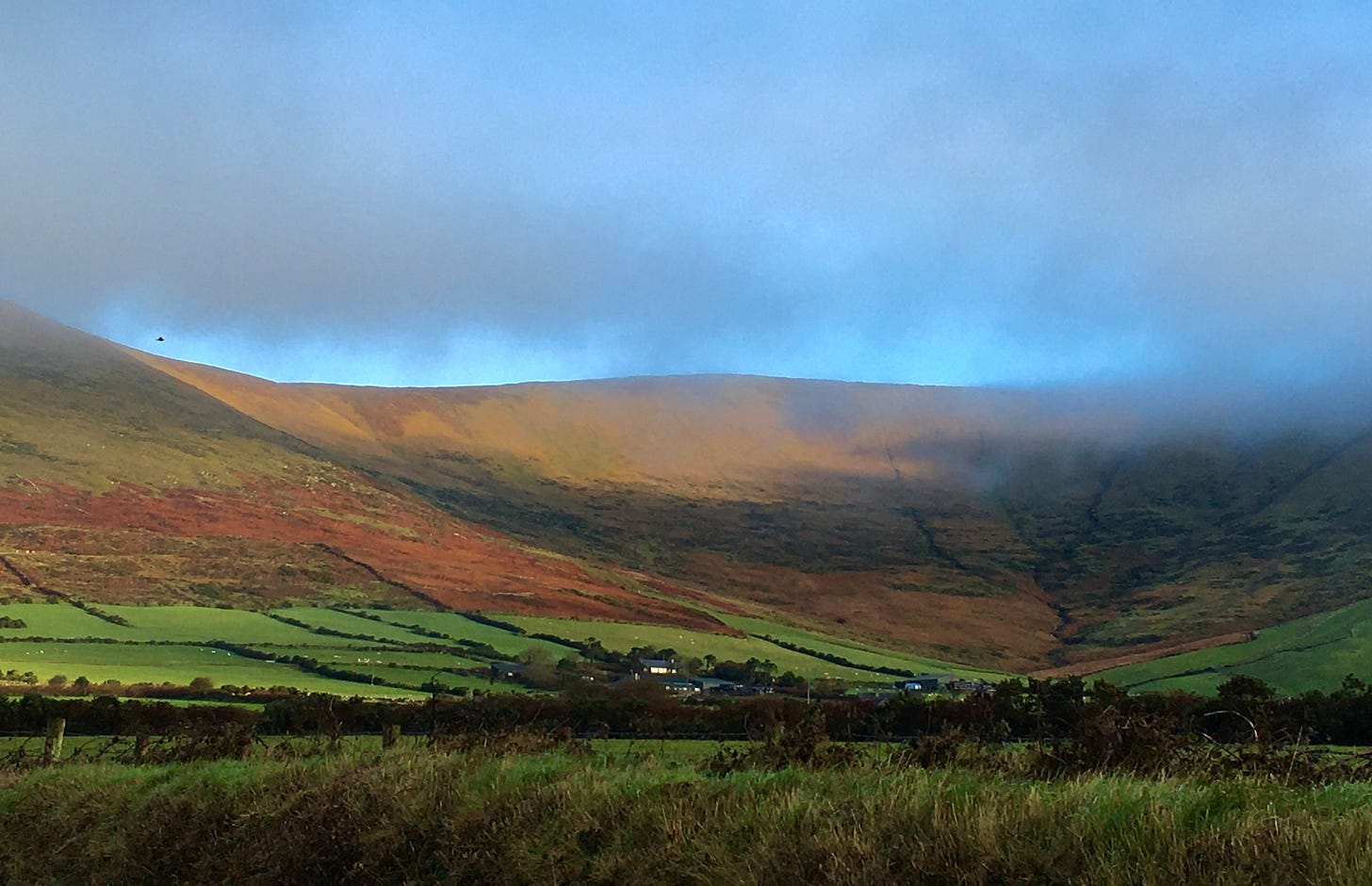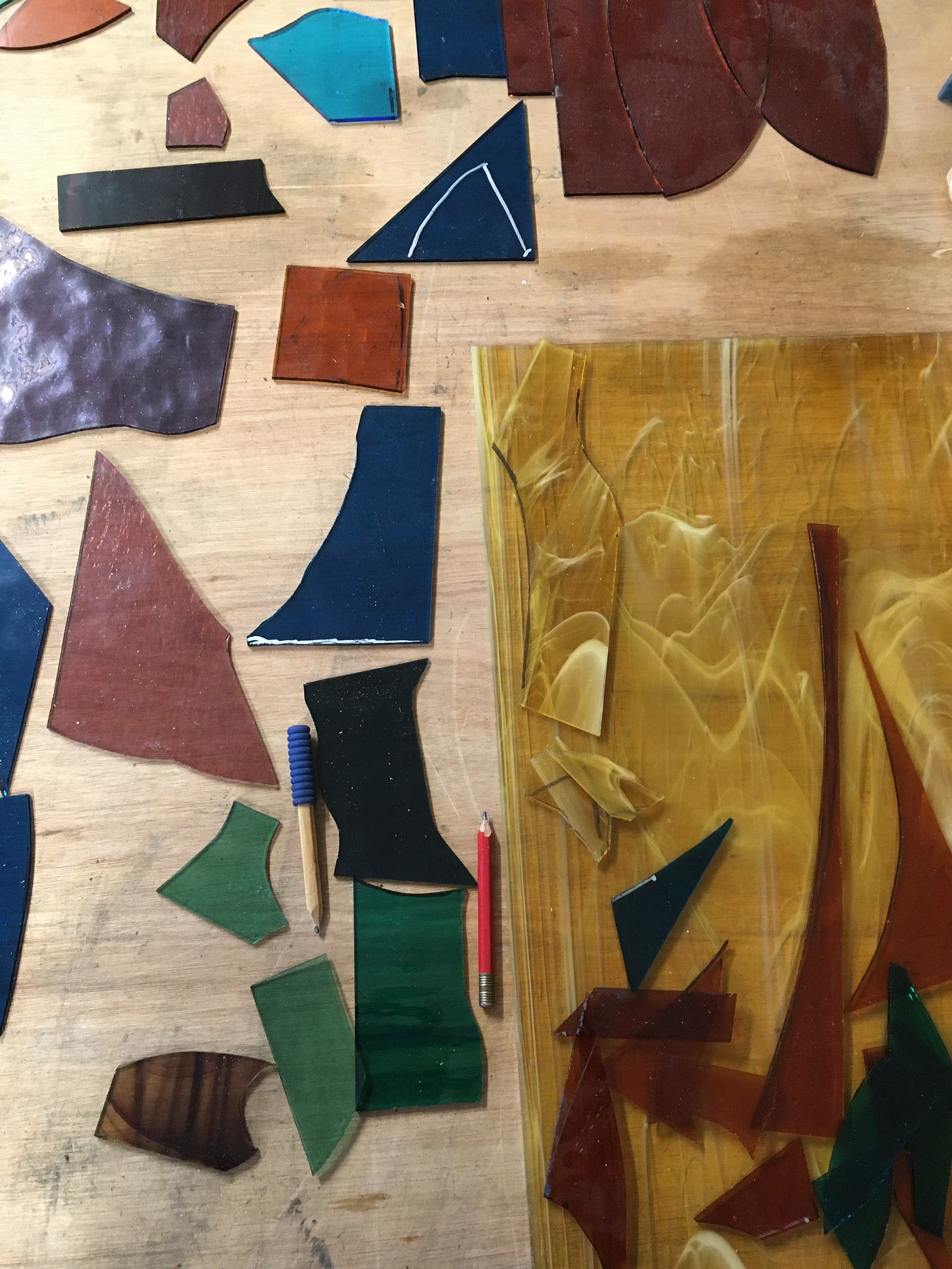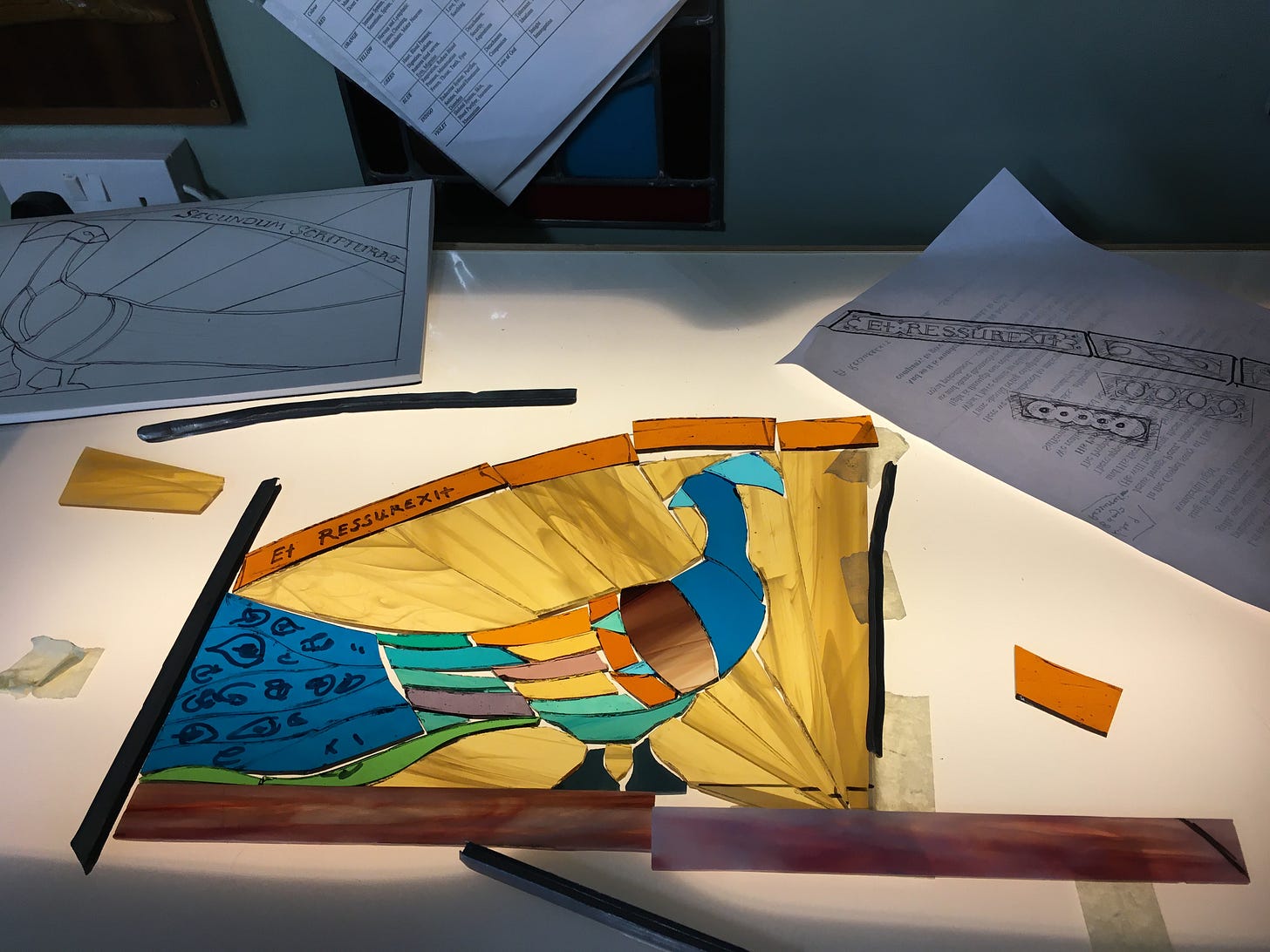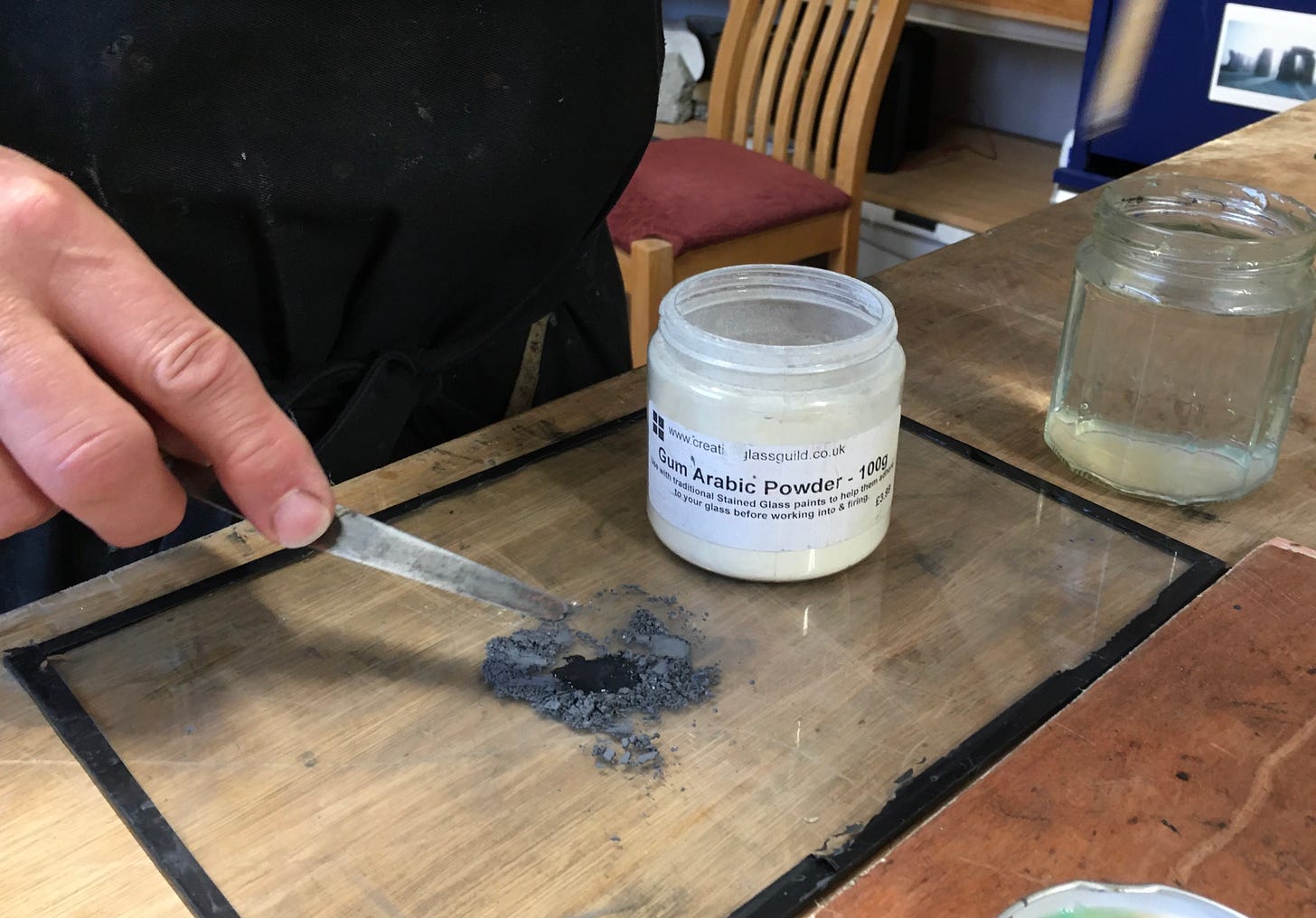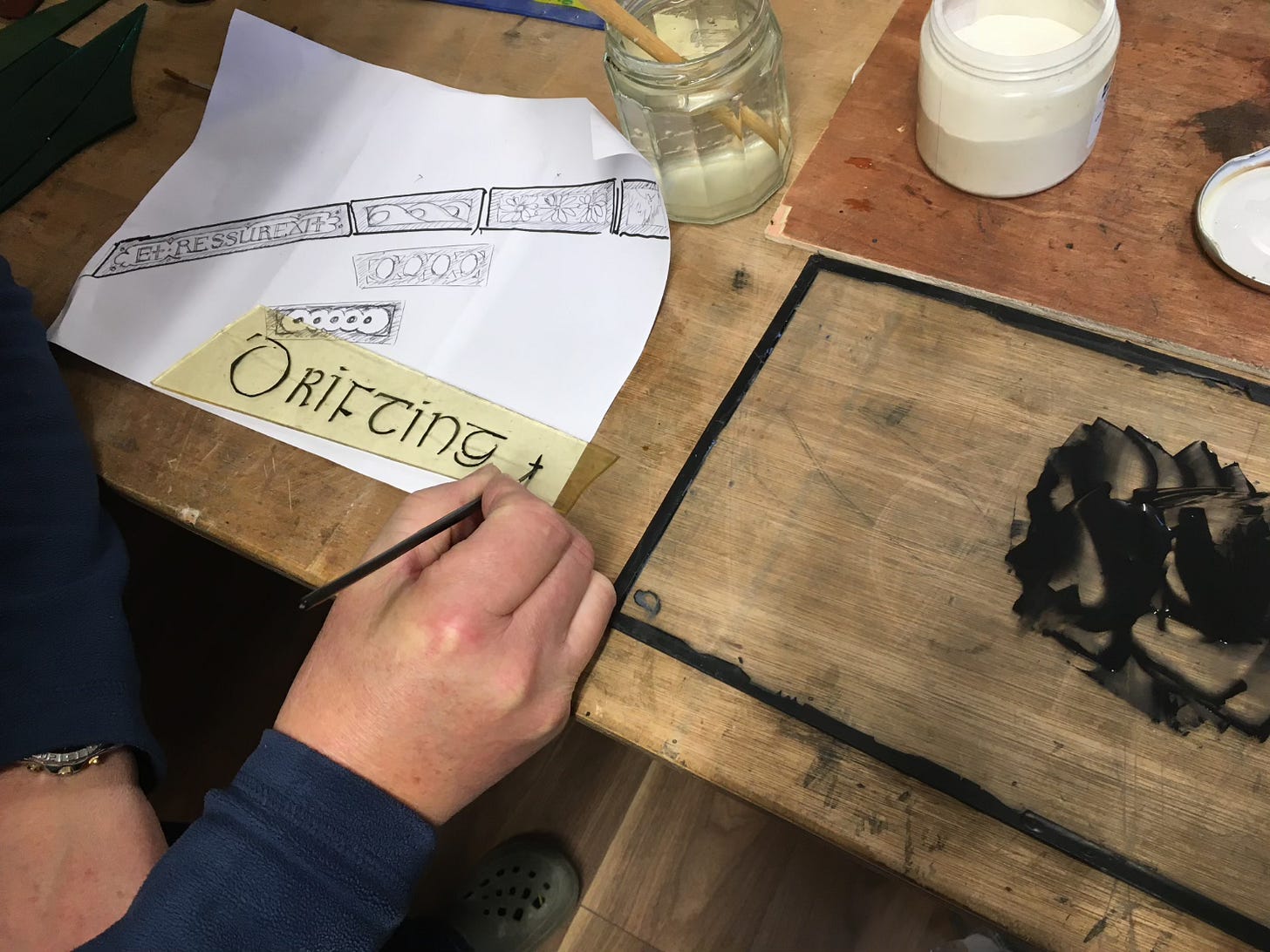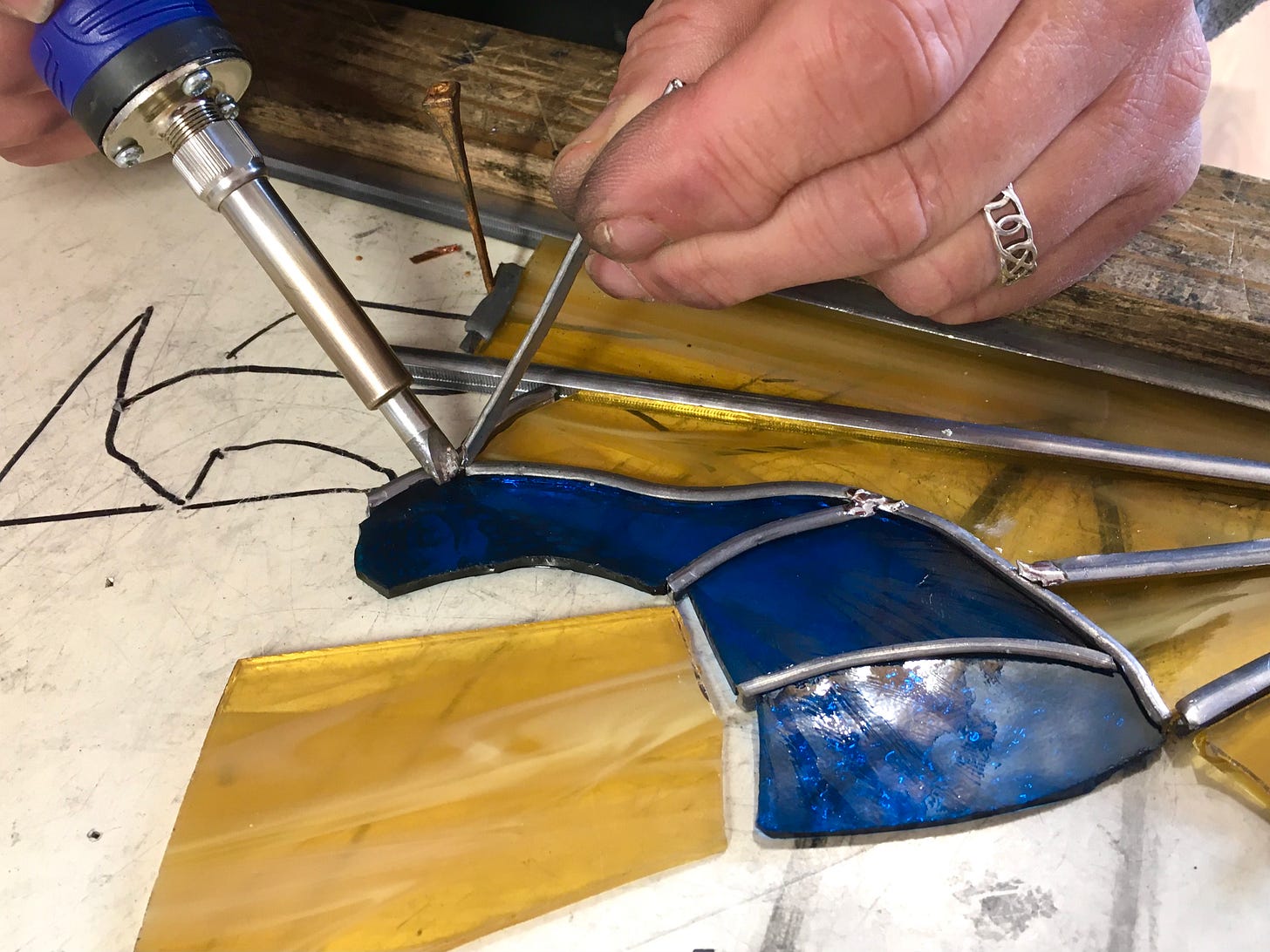Summer's glow has faded. The gold of freshly cut hay meadows has ripened to a burnished bronze; on the uplands, bracken is russet, moor grasses sienna.
Flash floods last week ripped off mountain vegetation to expose silvery bedrock, washing scree down to pile up in ditches and redirect streams through driveways and over fields; but already, new grass is showing green in the scars. The sheep's once-snowy sheared fleeces are brown with splashed mud.
In Killarney's woods, Beech trees rain golden coins around our heads. And the furze (gorse) is already in Spring bloom. On our morning walk up Ballygharrain lane, there are even violets and wild strawberry flowers, months early.
Autumn colours looking north to Ballygharrain. ‘Villages’ out here in the country are often just two or three houses or farms.
In Dingle, stunning colours of other hues are always on show. An Díseart Institute for Irish Spirituality and Culture contains a little chapel displaying a glorious treasure, unmatched anywhere else in Ireland: 12 windows by famed stained-glass artist Harry Clarke.
They were commissioned in 1922 by the Mother Superior of the Presentation Sisters convent (now the Díseart), and depict the life of Jesus Christ. Many of the faces of the people are those of Clarke's family, including his children, and the painting of the glass is still considered to be an outstanding achievement. He pioneered an acid-etching technique in order to achieve more colours in one piece of glass.

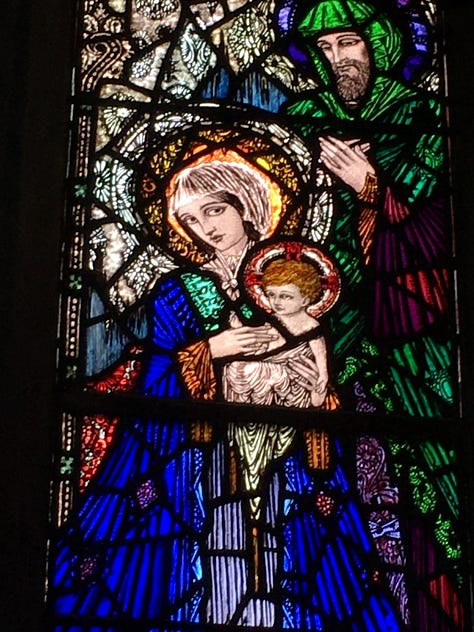
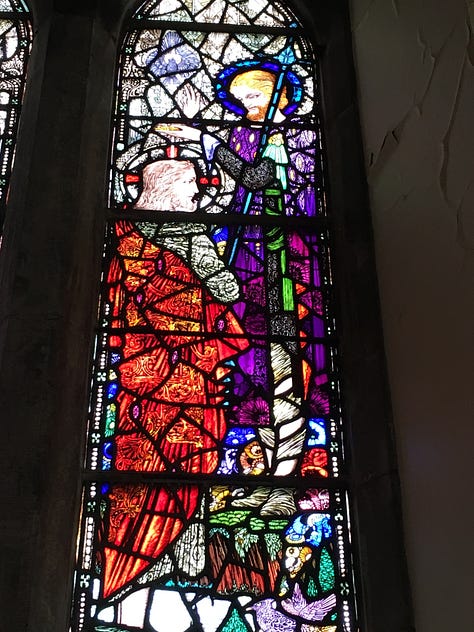
Harry Clarke's life flared brightly but briefly, flourishing into international fame but ending when he was only 42. Beginning as an apprentice in his father's decorating and stained-glass studio in Dublin, Harry showed such artistic talent that he won his first gold medal for stained glass when he was only 22, and his first commissions for book illustrations only a couple of years later. By this time, he was already showing his stained glass in national and international exhibitions.
During his career he produced 40 acclaimed stained-glass works, and also became well known as a book illustrator. His work was exhibited from Australia to America, Ireland to France.
In 1926, the Irish Free State government commissioned Harry’s studio to produce the Geneva Window to present to the United Nations, depicting the works of Irish writers. However, it was rejected for its depictions of sex, drunkenness and immorality (all from the literature), which the government did not want to represent Ireland to the world. (The window is now in The Wolfsonian–Florida International University, Miami Beach).
Harry Clarke died of TB five years later, but his vision lives on in his stunning windows and illustrations around the world – with some of the best works right here in Dingle.
Contemporary stained-glass artist Ben Dearnley is carrying on Harry Clarke's tradition of painted glass in Dingle – but has added a 21st-century touch, incorporating his hand-painted stained glass in stone and steel sculptures.


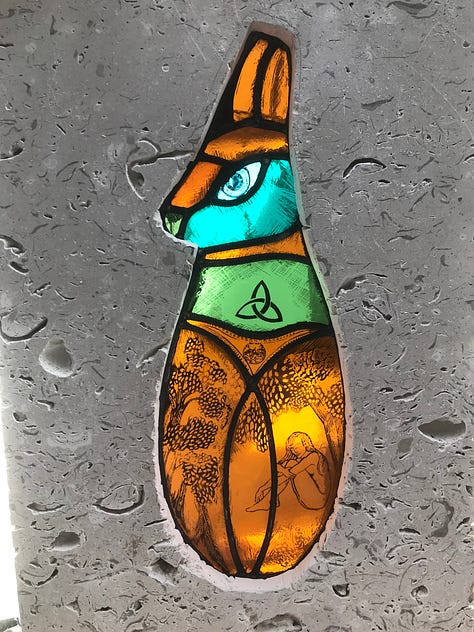
He admires Clarke's work for its vibrant colours and the depth of emotion shown in the faces of the Díseart windows.
"His windows have a really contemporary feel, despite being 100 years old. He used numerous techniques in each panel, from drawing to acid etching, which allows for amazing effects – for example, smoke from incense rising up through a single, unbroken piece of glass. The smoke is white but the glass is dark blue. These images are still fresh and dramatic today.”
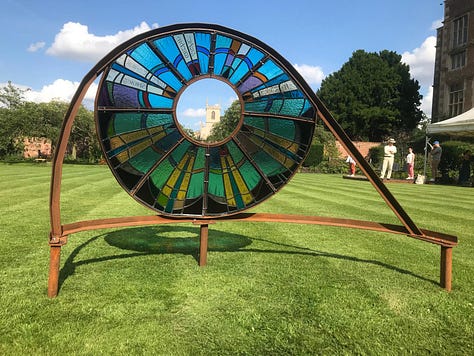
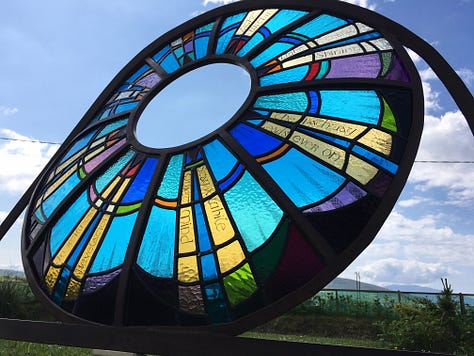
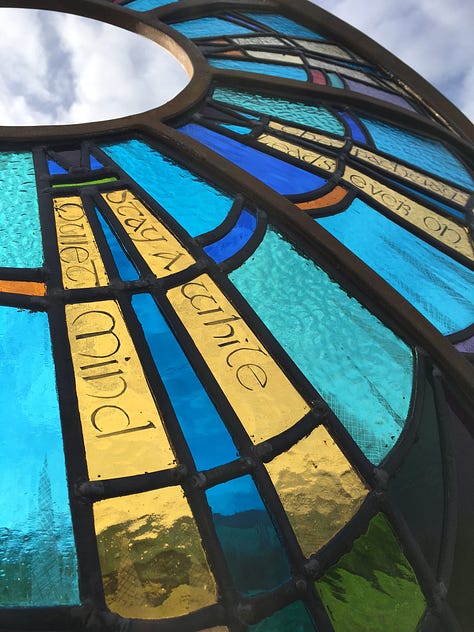
"The fragility of glass means you have to be very mindful of your design, particularly when setting it into stone for outdoor work. For me, the joy of working with glass is about creating an emotional depth to a piece, and being able to paint detail that can reflect medieval to modern patterns, blending ancient and contemporary techniques, just like Harry Clarke."
Below is a brief trot through Ben’s painstaking process – bearing in mind that each artwork may take months to complete.
First, pieces of glass are laid out and colours chosen.
Then they are roughly put together to follow a drawing. This piece is for a private client.
Each colour begins as a special powder which is mixed with Gum Arabic to make the paint.
Using a fine brush, the designs are painted on to the glass. When dry, the painted pieces are put into the kiln and fired overnight at 640 degrees Celcius, with a slow decline in heat so they don't crack.
When the pieces have been fired, they are soldered together with pieces of lead. Once complete, the lead is finished with a special cement, then a blacking agent. This is the same process that has been used by glassmakers across the world for a thousand years.
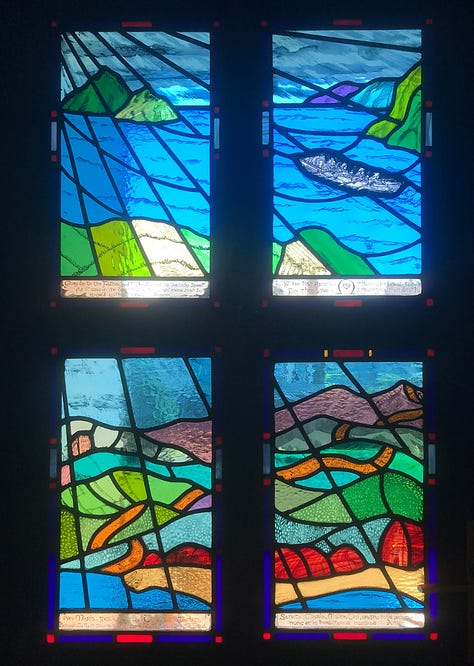
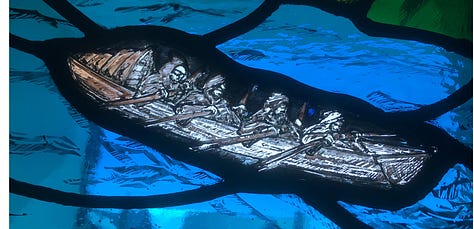
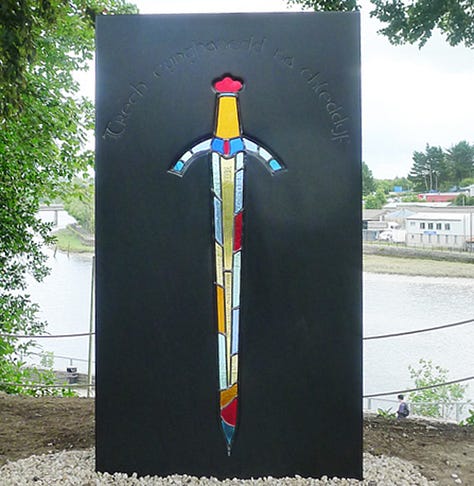
For more information see




